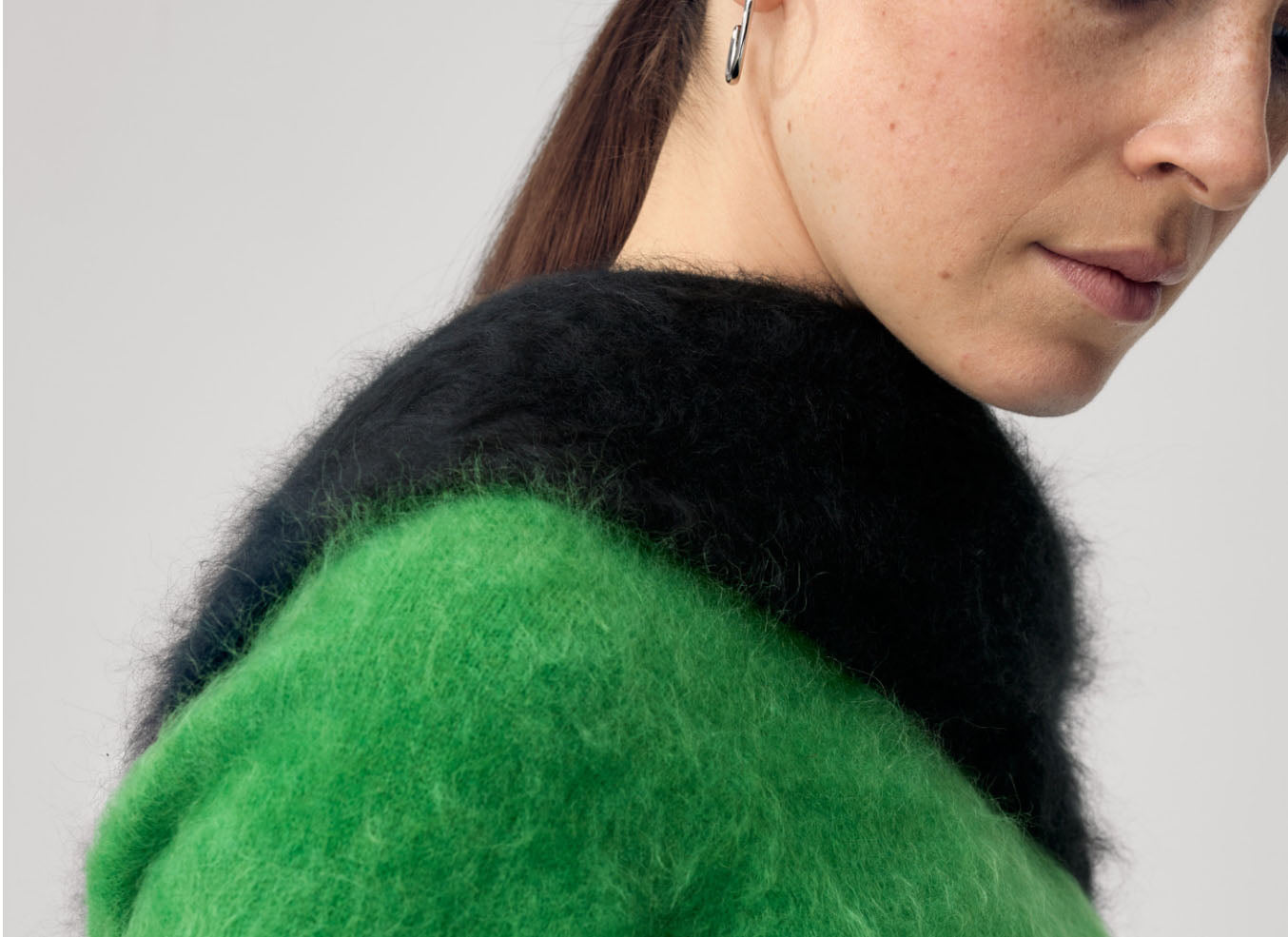Cashmere
Our Cashmere
At Desert Goat, we use only the high quality cashmere sourced from the high-altitude desert regions, where goat grow exceptionally soft undercoats to survive harsh winters that drop below –40°C. This rare fiber is nature´s softest gift - warm, breathable, and luxuriously light.
We produce in small batches with trusted partners, ensuring traceability, sustainability, and craftsmanship at every stage. Each piece is made with care, using carefully chosen gauges-from fluffy 5-gauge knits to ultra-fine 16-gauges yarns - tailored to the function and feel of every garment.

So, why is cashmere so good?
TERMS
Pilling
Most things in life have a downside — and so does cashmere.
Pilling occurs when shorter fibers twist around themselves in certain areas of a sweater — usually where there is more friction — and small, invisible bubbles (pills) form.
This is completely normal and not a sign of poor quality — quite the opposite. With high-quality yarn, pilling tends to happen early on and should almost completely stop after a few wears and washes. If pilling continues, the yarn is likely of lower quality, with shorter, cheaper fibers.
But don’t worry — “quality pills” are easy to remove with a cashmere comb or fabric shaver, or simply by gently picking them off by hand.
How should you care for your cashmere garments?
Proper care significantly affects how long your garment will last.
Washing:
Cashmere is a natural hair, and can be washed by hand or in a machine. Hand wash at 30°C or as recommended by experts. If using a machine, choose a short laundry program and make sure that you do not wash it in water that is warmer than 30 degrees and do not centrifuge the garment. Use a wool detergent and do not use fabric softener.
Use a mild soap like baby shampoo or a detergent made specifically for cashmere. Never use bleach. You can also dry clean your cashmere, but only with gentle dry cleaners.
Drying:
Flat dry your cashmere garment after washing. The easiest way to flat dry it is to lay it on a flat surface with a towel underneath. Make sure that you do not stretch the sweater. Remember to never tumble dry or hang dry your cashmere garments.
Ironing & steaming:
It is perfectly fine to iron your cashmere garments. Just make sure to have the right temperature (max 150 °) when ironing. It is also fine to steam the cashmere garment with a steamer.
Storage and Use:
Do not hang your cashmere garments up for storage. Fold them and store them in a drawer or a storage box. If you are having troubles with moths, put a few cedar balls in the drawer or box and the moths will stay away.
STITCHES
- PLAIN KNIT
Plain knit has a flat surface and does not have any knitted patterns. A plain knitted garment is most often knitted in 7 or 12 gg.
- CABLE KNIT
Cable knit pattern is a decorative pattern that reminds us of braids.
- RIB KNIT
A ribbed knitted garment is knitted in a special way that gives it a ribbed pattern.
- CHUNKY KNIT
A chunky knit garment is made with lower gauge and gives it a thicker and heavier texture. Therefore, a lot more yarn in needed when making a chunky knit.
- DOUBLE KNIT
Double knit cashmere is two sides that are sewn together to form a double-faced fabric.
- PADDINGTON KNIT
Paddington knit is a kind of rib knit but with wider ribs. The lower the gauge of the sweater the wider the ribs are.
Certificate

- Choosing a selection results in a full page refresh.
